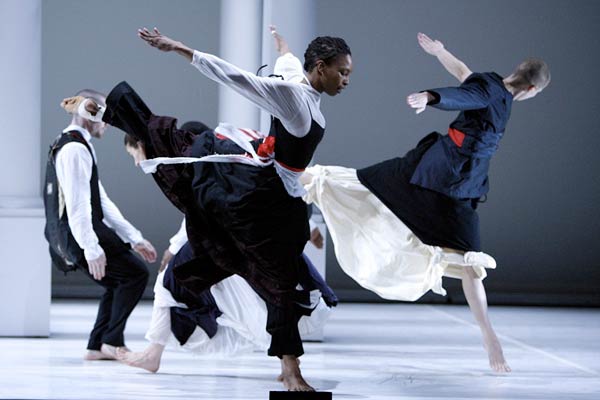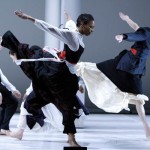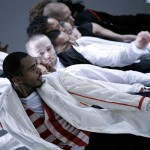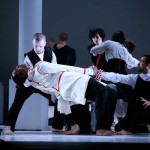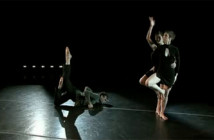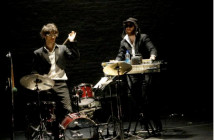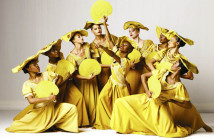BILL T. JONES/ARNIE ZANE DANCE CO: ANOTHER EVENING: SERENADE/THE PROPOSITION
February 2009 will mark the bicentennial of Abraham Lincoln's birth. Celebratory volumes singing the sixteenth president's praises -- new biographies, Civil War history hard covers, and children's books -- are already hitting bookstores. However, more attention does not equate greater understanding; much of what we know about Lincoln we do not know at all. Was he a war hawk? Was he gay? Was he depressed? As we approach the New Year and more commemorative events, we should ask if we are thinking about Lincoln the man or Lincoln the myth. At the Institute of Contemporary Art this past Friday, October 24th the Bill T. Jones / Arnie Zane Dance Company (BTJ/AZDC) asked a similar series of questions in their piece: "Another Evening: Serenade/The Proposition."
Using video, original composition, vocals and Lincoln's own words, famed choreographer Bill T. Jones created a piece that is less about Lincoln the man and more about how we create history. Is history a place, a time, an invention? Is history circular? Linear? Are historical heroes real men or men we have formed? In "Another Evening: Serenade/The Proposition," Jones oscillates between stark depiction and obscurity -- video footage of the White House flashes on the stage as well as shadowy, bare tree limbs. Jones does not clarify his ambiguities. He offers no theory about Lincoln. He does not answer the questions he poses, and that, oddly, is the strength of his piece.
This first installation of the three-part exploration is a curious mixture of the old and the new, which manages to suggest the Civil War era without making the dancers wear period costumes. The set is a simple structure of six alabaster, Doric columns that echo the White House and reflect video footage as it flashes on stage. An original score by Chris Lancaster and Jerome Begin sung by Lisa Komara, blends classical music with folksongs. At times the music is as moving as a battle hymn but at others painfully jarring -- such as when Komara sings a violent rendition of "Dixie" while dancers fiercely leap and plunge.
In some sequences, Jones had his troupe move in repetitive circular motions with a gooeyness reminiscent of marshmallows being pulled apart. In others, he had them erupt into wild battle-like flights. Members of the BTJ/AZDC have an ability to twist their limbs like they have no joints and when they dance in couples they seem as if they are physically connected.
The strongest scenes are where the dancers divide into small groups. Paul Matteson, a BTJ/AZDC member since only this year, gives a particularly moving performance throughout the show and is most memorable for the scene where he depicts "Young America." He stands stock-still -- exposed but for black briefs -- until female dancers begin to dress him in an ill-fitting suit of clothe and tape. From this point on he does not disappoint in his role of playing an individual among the crowd.
At no point does Jones directly depict Lincoln, yet even his evocation, Jones conceded in a question and answer session after the performance, makes one draw parallels to the present day historic election. Though he was reluctant to talk politics after the show, Jones couldn't help saying he did not envy the next president, "We're in a shit hole right now." If only someone would commission a piece from Jones about that idea. Imagine what new questions he would raise and ask us to answer for ourselves.

